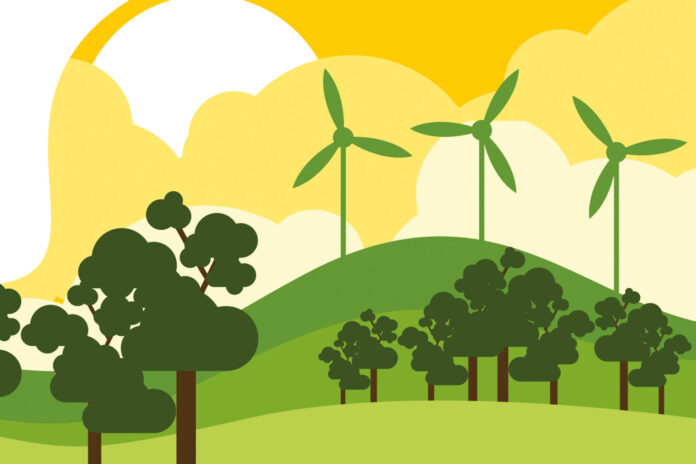
Alissa MacMillan
Q: I enjoy keeping up with weather reports and realise we rely on them so much. I was wondering what their jobs are like now, especially with climate change happening.
A: The climate scientists at the front lines of weather reporting have certainly been busy of late. “Climate warming predictions, both globally and for Ireland, are becoming a reality,” explains Paul Moore, a climatologist at Met Éireann. “Ireland’s warming trend continued in 2023, as it was our warmest year on record and one of the wettest,” he adds, as projected by the most recent The Intergovernmental Panel on Climate Change (IPCC) report.
I spoke with Moore, who also touched base with his colleagues at Met Éireann, climate scientists Padraig Flattery and Markus Todt, and Ines Alonso, to find out what’s happening from their weather-focused perspective.
“The Irish climate by its nature is very variable, due to us being on the edge of northwest Europe and heavily influenced by the position of the Jetstream,” which is itself affected by several global drivers and their interaction, he says.
“As a climatologist who works with climate data daily, it is obvious to me that our climate is changing,” Moore says, “and it is predicted to change and warm even more in the future”. In 2023 alone, the “unprecedented ocean warmth, glacier retreat, and Antarctic sea ice loss, is cause for particular concern, and not only for me or for Met Éireann, but for the whole climate community.”
To track these changes in weather patterns, it’s not just a matter of noticing an especially wet stretch, or even, as Moore explains, “patterns on a month to month or season to season basis” – it’s about tracking averages over a longer period of time and “comparing them to the averages of a previous period.”
For example, they completed a study in 2023 comparing the reference period of 1991-2020 with the previous period, 1961-1990. “This analysis reflected how Ireland’s climate has become warmer and wetter over the most recent 30-year period, when compared to the previous one,” explains Moore, showing an increase of approximately 0.7 °C in annual mean air temperature and 7% in annual average rainfall between the two reference periods.
EXTENDED GROWING PERIOD
Climate scientists also look to indicators like the growing season – noted from the stretch of time between consecutive days of frost in the winter and warmth in the spring. The evidence is in: the growing season has lengthened by an average of 14 days at Belmullet, County Mayo; 16 days at Valentia Observatory, County Kerry; 16 days at Phoenix Park, County Dublin, and 12 days at Shannon Airport between the same two reference periods, all signs of a warmer country.
Keeping a close eye on an area of the North Atlantic is also a priority where, for over a year now, the mean temperature has been at record level, “higher than anything they have seen,” says Moore. Because of this, “the system can hold more moisture and drop more rain than it would in the past, which is linked to why we’re having more rain and warmer oceans.”
Met Éireann works continually on observation-gathering and weather modelling to get forecasts to the public. They also collaborate with others to help make Ireland climate-prepared with climate services provisions, adaptation and mitigation policy-making, and implementation measures.
One example is TRANSLATE, a collaboration between researchers from University of Galway’s Irish Centre for High End Computing (ICHEC) and UCC’s SFI Research Centre for Energy, Climate and Marine (MaREI). With Met Éireann, they are creating a “common standardised set of national climate projections,” available at met.ie, which are helpful for climate resilience, for example, planning for buildings and infrastructure that can handle extreme heat conditions or roads that can manage rainfall.
Moore also points to climate modelling research, done in-house and with national partners such as ICHEC, the Marine Institute, the EPA and internationally. A current project focuses on improving the important North Atlantic processes within the global climate model.
FARMERS AT ‘THE FRONT LINE’
Met Éireann also works with Teagasc to predict grass growth, has projects looking at pests which can affect agriculture and forestry, and has a plan to look into the effects of climate change on forest fires with the Department of Agriculture, Food and the Marine (DAFM).
Farmers of course rely on these forecasts – “Persistent rain over the past weeks and months have meant that soils have been saturated and waterlogged,” says Moore, a projection of increased rainfall in winter and, when rain does fall, it is likely to be more intense, leading to “knock-on impacts for agriculture as it could mean increased risk of drought in the summer and flooding in winter.”
“Farmers are at the front line of climate change in Ireland and are feeling the impacts of less predictable weather already, and will face more challenges going forward,” like heat stress and winter fodder crises, so engaging with agricultural advisors is key. “Adaptation options will look different to each farmer depending on the pressures facing them.”
‘EVERY ACTION MATTERS’
Moore notes that, from the perspective of Met Éireann, it’s important for every household, rural or urban, to stay informed about weather and climate (at met.ie and the Met Éireann app).
“We are expecting to live in a warmer and wetter Ireland in the coming decades, the more warmer and wetter depending on the level and timing of climate action,” says Moore. “Any measure that anyone can realise at an individual or community level is important, as the models show that every action matters and every step we take towards climate mitigation and adaptation matters.”
“You’d prefer it not be so interesting, but you’ve got to deal with what you’ve got,” Moore says. Busy times indeed.











